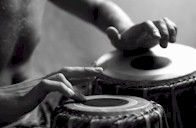
For the young people who took aggressively to the streets in the late 1960s, the thrill of being involved in a fight (for many, the first in their lives), combined with the feelings of support and solidarity with their comrades “at the barricades,” in a campaign that enabled them to feel they were changing the world, could produce a powerful endorphin rush.
The ideology, goals, and personal values of the long-haired, wild-eyed, free love and drug-propounding young leftist radicals of this era could hardly have been further removed from those of the stolidly buttoned-up right-wing Germans who were drawn in by Hitler’s rallies. But on another level, both movements can be seen as similar forms of psychodrama.
In both, the satisfactions of simply identifying with and participating in a dynamic tribe explain many behaviors for which a purely rational assessment of stated goals and policy objectives comes up short.


